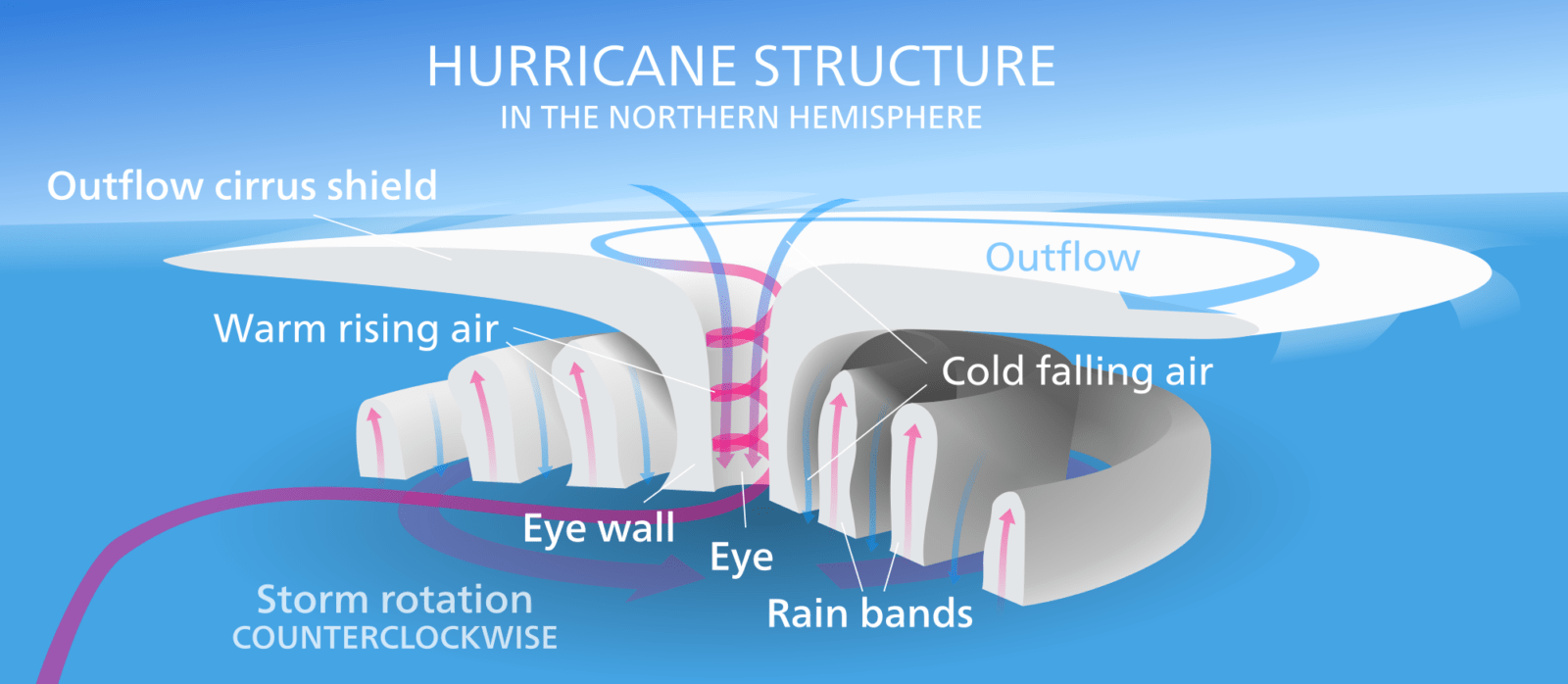F. tropical storms
1/26
There's no tags or description
Looks like no tags are added yet.
Name | Mastery | Learn | Test | Matching | Spaced | Call with Kai |
|---|
No study sessions yet.
27 Terms
Global atmospheric circulation
The large-scale movement of air around the Earth, driven by temperature and (air) pressure differences
Hadley Cells/ mid-latitude cells
Equator is the most humid area as the sun’s rays are most concentrated
Evaporation occurs because of the heat and the air rises
As it rises it cools
This condenses the initially vaporised moisture and causes rainfall
As it depletes it turns into warm dry air
It then has to get out of the way of the equator as the rest of the evaporated air rises
It then sinks down where some of it drifts back to the equator and the cycle repeats as an atmospheric cell
Anticyclone
Air is sinking towards the ground/ surface from areas of high pressure e.g. North Pole
Cyclone
Air is rising from the ground/ surface from areas of low pressure on the ground e.g. at the equator
Coriolis effect
Results from differences in velocity as the earth spin
Tropical storm
A localised very intense low pressure wind system forming over tropical oceans with winds of hurricane force
Where are hurricanes found?
Near the connection between N. and S. America above equator
Where are cyclones found?
Above and below equator in the north of Australia and east of Africa and south of Asia
Where are typhoon found?
South-east of Asia above equator in pacific ocean
Where are westerlies found?
In the mid-latitude cells away from the equator
Where are southeasterly trades found?
South of the equator going to the equator
Where are northeasterly trades found?
North of the equator going to the equator
Why dont tropical storm occur at the equator?
Due to the Coriolis effect and the Hadley cells changing path away from the equator
What is the first step to form a tropical storm?
Strong upward movement of air draws vapour up from the warm ocean surface
What happens after ‘Strong upward movement of air draws vapour up from the warm ocean surface’?
Evaporated air cools as it rises and condenses to form towering thunderstorm clouds
What happens after ‘Evaporated air cools as it rises and condenses to form towering thunderstorm clouds’?
As the air condenses it releases heat which powers the storm and draws up more and more water from the ocean
What happens after ‘As the air condenses it releases heat which powers the storm and draws up more and more water from the ocean’?
Several smaller thunderstorms join together to form a giant spinning storm
What happens after ‘Several smaller thunderstorms join together to form a giant spinning storm’?
The storm now develops an eye at its centre where air descends rapidly
At what wind speed does it become a tropical storm?
120km per hour
What happens after ‘The storm now develops an eye at its centre where air descends rapidly’?
As the storm carries across the ocean by the prevailing winds, it continues to gather strength
Where are the most intense weather conditions felt?
The eye wall
What happens after ‘As the storm carries across the ocean by the prevailing winds, it continues to gather strength’
On reaching land the storm’s energy supply (evaporated air) is cut off. the friction with the land slows it downvand it begins to weaken
What happens if the storm reaches warm sea again after crossing land?
It may pick up strength again
Features and structure of a tropical storm

How does climate change effect the frequency of tropical storms?
Frequency may increase in future
How does climate change effect the intensity of tropical storms?
Sea surface temperatures/ atmosphere temperatures increasing potentially causing more intense storms
More data necessary before deriving conclusion
How does climate change effect the distribution of tropical storms?
Surface temperatures increased by 0.25-0.5 degrees celsius
With overall temperatures increasing it is possible for tropical storms to emerge out of previously cool waters